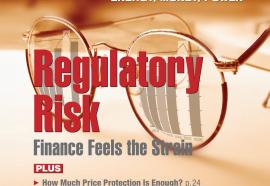Yes, We Have No Negawatts
When you sell demand response back to the grid, how much capacity are you now not buying?
When customers sell demand response into a regional capacity market (such as PJM’s Reliability Pricing Model, known as the RPM), how much credit should they earn for agreeing to curtail demand and alleviating stress on the grid — that is, for reducing the market’s need for generating capability and capacity reserve margin? And further, should the amount of credit depend on whether the customer works with market aggregators, known both as CSPs (“Curtailment Service Providers”) or ARCs (“Aggregators of Retail Customers”)? One view would pay customers for the full extent of their curtailment of demand — known as its “Guaranteed Load Drop” (GLD). The other would limit capacity credit to the customer’s prior load history — “Peak Load Contribution,” or PLC. The answer may well dictate whether regulators continue to treat “energy” and “capacity” as two distinct concepts.




